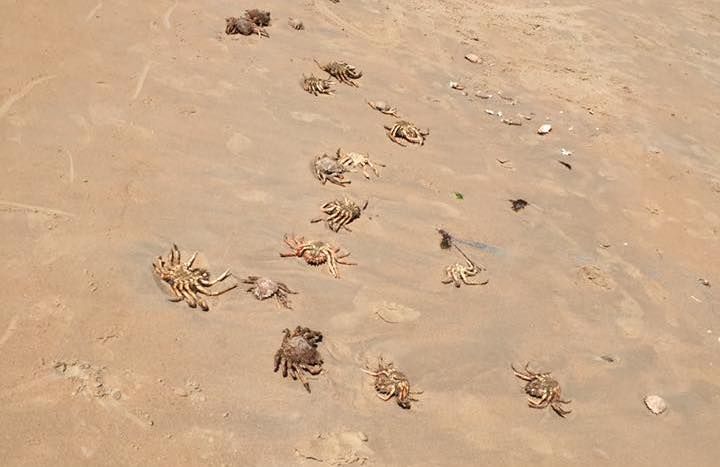

Hundreds of 'dead' crabs washed up on the beach in St. Brelade over the weekend but, while the sight of them might seem alarming, islanders are being reassured there's nothing fishy going on.
Experts say the phenomenon is entirely natural and it is in fact, not whole crabs that have washed up, but only shells, which the crustaceans have left behind after moulting.
While some islanders voiced their concerns about the phenomenon on social media, there is nothing to get crabby about. It is in fact a good sign to find empty shells, known as the exoskeleton, as the crabs in question, Spider Crabs (Maja squinado), are a species known for moulting. The crabs shed their cramped shells so that they can grown into a roomier one.
Paul Chambers, Marine and Coastal Manager, told Express: "The crabs come inshore to moult and this happens most years. At this time of year the crabs will migrate into shallow water in their 1000s and moult their shells. Some of the shed shells will float allowing wind and currents to carry them onto the beach. The western coast is mostly affected because the shallow waters, easterly winds and the currents all contribute to bringing the shells in."
Video: A spider crab sheds its shell - part of a normal annual process, which results in many shells being washed up on Island beaches.
"It can look alarming but is a natural phenomenon. The fact that the empty shells look like a whole crab shows that they haven't been broken up by fishing gear or anything else."
While it is an annual phenomenon, the sheer number of shells always seems to attract the attention of islanders. In 2014, the Department of the Environment received hundreds of calls from alarmed islanders, prompting them to put an official notice to reassure everyone.
They explained: "Spider crabs grow by moulting - shedding their shells - and it's a normal part of their life cycle. When the crabs moult, they exit through the back of their shell, leaving behind the whole exoskeleton including the legs and eye stalks, which can look just like an intact crab."
Comments
Comments on this story express the views of the commentator only, not Bailiwick Publishing. We are unable to guarantee the accuracy of any of those comments.